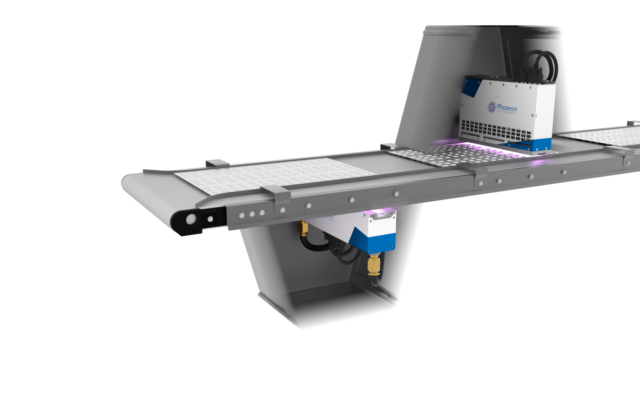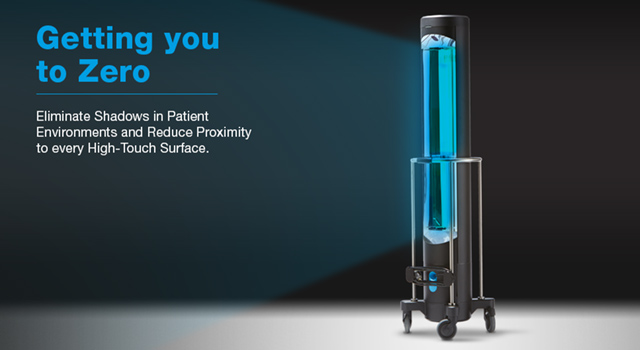Far-UVC UV Sanitizers: Reinventing Sanitation Requirements for a Safer Setting
Wiki Article
Checking Out the Advantages of Far UVC Light: Revolutionizing Indoor Air High Quality
One such solution that has actually obtained interest is Much UVC light. Exactly how precisely does Far UVC light job? In this discussion, we will certainly discover the remarkable globe of Far UVC light and discover its capacity in changing the way we safeguard our indoor atmospheres.How Much UVC Light Works
Far UVC light works by sending out short-wavelength ultraviolet light that has the capacity to penetrate and suspend microorganisms. Unlike conventional UV light, which can be damaging to human skin and eyes, much UVC light has a much shorter wavelength that is absorbed by the external layers of human skin, avoiding it from reaching the underlying living cells. This makes it a efficient and safe alternative for continual disinfection in busy spaces.When far UVC light is discharged, it communicates with the DNA and RNA of microbes, including viruses and germs, interrupting their capacity to reproduce and causing them to become inactive. The high power of the short-wavelength light problems the molecular framework of the genetic material, protecting against the microbes from spreading out and recreating.

In addition, far UVC light can be quickly integrated into existing illumination fixtures, making it a cost-efficient remedy for a large range of applications, consisting of medical care facilities, schools, workplaces, and mass transit. Its ability to constantly decontaminate busy spaces without positioning a danger to human health and wellness makes much UVC light an encouraging technology in the field of indoor air high quality management.
Far UVC Light's Impact on Airborne Pathogens
The effect of far UVC light on airborne microorganisms is substantial in lowering the transmission of infectious diseases and improving interior air quality. Far UVC light refers to a specific series of ultraviolet light that has a wavelength between 207 and 222 nanometers. Unlike traditional UVC light, which is unsafe to human skin and eyes, much UVC light has actually been located to be secure for people while still being effective against pathogens.Research studies have shown that far UVC light has the ability to inactivate a broad range of airborne infections, consisting of the flu infection and the coronavirus (far-uvc). These microorganisms are sent via breathing beads, and by utilizing much UVC light, it is feasible to lower their viability and stop their spread
One of the essential advantages of making use of much UVC light is its capability to reach all locations of an area. Unlike various other disinfection methods that may have limited reach, much UVC light can be set up in overhead lighting components, making certain that the whole area is treated. This makes it specifically efficient in crowded locations such as hospitals, colleges, and mass transit.
Additionally, far UVC light can be made use of constantly without positioning a threat to human health and wellness. It can be implemented as component of an extensive strategy to enhance indoor air top quality by minimizing the concentration of air-borne pathogens. By incorporating much UVC light into existing air flow systems, it is possible to develop safer and much healthier indoor settings.
Health And Wellness Benefits of Far UVC Light
Utilizing much UVC light supplies countless health and wellness benefits, making it a beneficial tool in advertising public health and safety and security. Far UVC light has actually been discovered to properly kill air-borne microorganisms, such as viruses and microorganisms, without harming human skin or eyes. This makes it a perfect solution for sanitizing interior environments and lowering the risk of infections.One of the vital health benefits of much UVC light is its capacity to combat the spread of air-borne conditions. Studies have actually revealed that far UVC light can efficiently suspend infections like flu and tuberculosis. By setting up much UVC lights in public spaces, such as colleges, offices, and medical facilities, the transmission of these diseases can be considerably minimized.
In addition, much UVC light has actually been located to be secure for continual exposure, as it does not cause skin damages or increase the risk of skin cancer. This is because of the reality that much UVC light has a minimal array of infiltration in human skin, preventing any harm to much deeper layers.
In addition to its straight influence on air-borne microorganisms, far UVC light can also have indirect health benefits. By reducing the visibility of harmful microorganisms airborne, it can improve indoor air quality, leading to a decrease in respiratory system signs and symptoms and allergic reactions.
Far UVC Light's Role in Lowering Irritants

Far UVC light, with its wavelength in the series of 207 to 222 nanometers, has been proven to be efficient in inactivating bacteria, fungis, and viruses. Recent researches have additionally shown that it can successfully reduce the visibility of allergens in indoor rooms. When much UVC light is sent out, it engages with the DNA and RNA of microbes, damaging their hereditary product and preventing their duplication.
Much UVC Light's Potential in Public Spaces
With its he has a good point tried and tested effectiveness in minimizing irritants and inactivating bacteria, much UVC light holds great prospective for application in public areas. Public rooms, such as medical facilities, airports, institutions, and workplaces, are typically crowded and susceptible to the spread of airborne illness. Integrating much UVC light innovation in these locations can significantly enhance indoor air high quality and minimize the transmission of harmful pathogens.One promising application of far UVC light in public rooms remains in air flow systems - far-uvc. By setting up much UVC lamps in cooling and heating systems, the technology can disinfect the air as it circulates, properly reducing the focus of airborne viruses and bacteria. This method can assist avoid the spread of diseases such as influenza, covid-19, and consumption, promoting a much healthier and much safer atmosphere for residents
Furthermore, far UVC light can be utilized in the disinfection of frequently touched surface areas. High-touch locations in public spaces, such as doorknobs, hand rails, and lift buttons, can harbor a multitude of virus. By tactically putting far UVC lights in these areas, the technology can continually decontaminate surfaces, reducing the threat of contamination and transmission.
Additionally, using much UVC light in public rooms is safe for human exposure. Unlike traditional UVC light, which can be harmful to human skin and eyes, far UVC light has been shown to be safe and secure for constant procedure in busy areas. This makes it an ideal remedy for enhancing indoor air top quality without positioning any kind of health and wellness threats to individuals.
Conclusion

Much UVC light works by giving off short-wavelength ultraviolet light that has the capacity to permeate and suspend bacteria. Unlike traditional UV light, which can be dangerous to human skin and eyes, far UVC light has a much shorter wavelength that is absorbed by the external layers of human skin, preventing it from reaching the underlying living cells. Much UVC light refers to a particular range of ultraviolet light that has a wavelength in between 207 and 222 nanometers. Unlike traditional UVC light, which is unsafe to human skin and eyes, far UVC light has actually been found to be risk-free for human beings while still being efficient versus pathogens.
Unlike traditional UVC light, which can be harmful to human skin and eyes, far UVC light has actually been proven to be safe and safe for constant procedure in busy spaces.
Report this wiki page